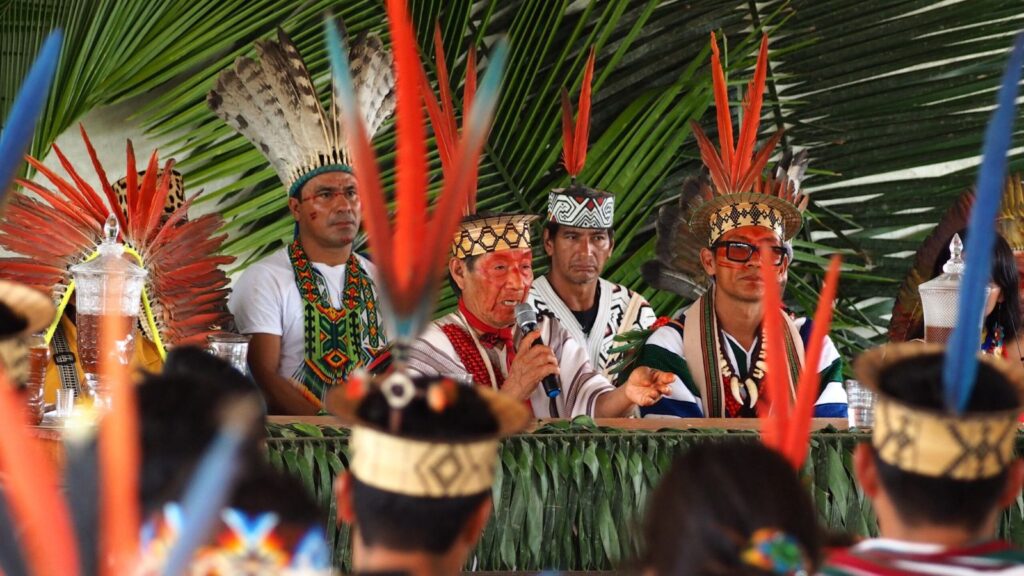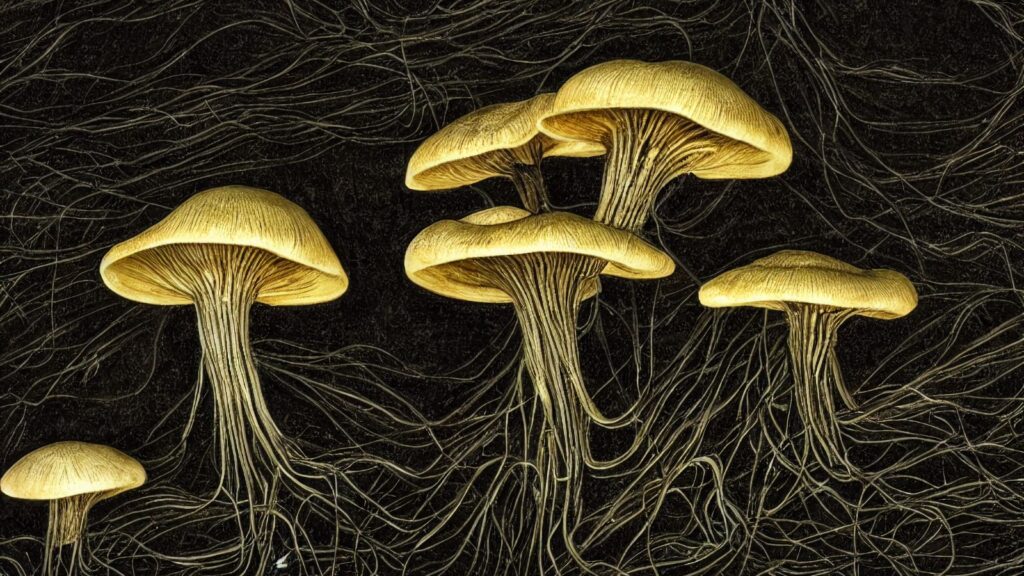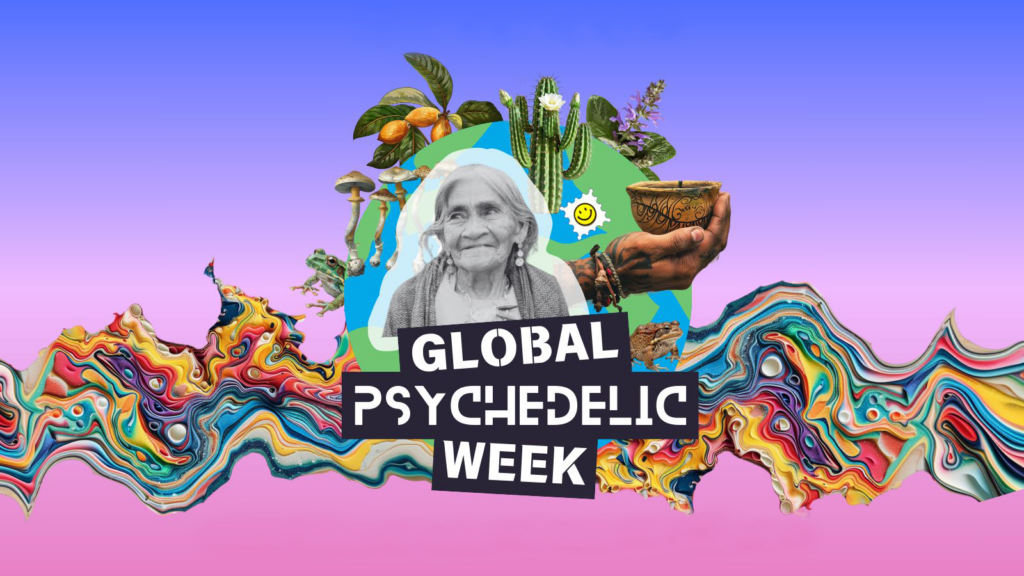The following is the seventeenth installment from Sacred Economics: Money, Gift, and Society in the Age of Transition, available from EVOLVER EDITIONS/North Atlantic Books. You can read the Introduction here, and visit the Sacred Economics homepage here.
Under
capitalism, man exploits man. Under communism, it's just the opposite. –John Kenneth Galbraith
The new
exchange systems we are exploring blur the boundary between the monetary and
nonmonetary realms and therefore the standard definition of the "economy."
Really, what is the economy? Underneath the ephemera of money — slips of paper,
bits in computers — what changes when the economy grows or shrinks? How would we
measure it in the absence of a common unit of account? Ultimately, what
economics attempts to measure, underneath money, is the totality of all that
human beings make and do for each other.
That we should even attempt to measure this at
all is quite odd. I have already leveled judicious criticism at the fat target
of economics' equation of money with the good. However, alternative measures of
economic progress, such as the genuine progress indicator or national happiness
index, suffer similar problems on a subtler level. Certainly they are
improvements over GDP, for they no longer count such things as prisons and
armaments as positive contributors to the good, and they add to economic
wellness such things as leisure time. Nonetheless, they still assume that we
can and should quantify the good, and that in order to do so, we must convert
everything into a standard unit of measure.
Money and measure are indeed closely
intertwined. Money originated, in fact, as measure: standardized quantities of
commodities and then metals. The age of money has coincided with the program of
reductionism and objectivity, which sought through science to attain mastery
over the world. What can be measured can be mastered, as we imply when we claim
to have taken the measure of a man. The immeasurable was excluded from
science — "consign it to the flames," Hume said — and from economics as well. Thus
it has come to pass that standard of living has diverged from quality of life.
The former is a quantifiable standard; the latter is not.
Of all the things that human beings make and do
for each other, it is the unquantifiable ones that contribute most to human
happiness. You might, for instance, quantify leisure time and assign it a
dollar value to calculate a society's well-being, but how is that leisure time
spent? It could be spent mired in an addiction, in mindless entertainment, in
intimacy with another person, or in telling stories to children. And even if we
somehow accounted for these distinctions, could we quantify how present someone
is when they are telling those stories? Can we quantify how anxious someone is
when at work? If public policy is guided by the maximization of a quantity — be
it GDP or some other measure — the most important things will surely be left out.
Quantifiable needs are also finite — another
reason to question a money system predicated on the infinite growth of finite
demand for finite resources. Qualitative needs are different: they are neither
quantifiable nor finite. It is in this realm that the ideology of Ascent finds
its true spiritual motivation. Growth, on one level, might end-the growth of
the monetized realm, the growth of our appropriation of nature — but another kind
of development will continue: the growth of the human spirit, with its infinite
need for beauty, love, connection, and knowledge. A zero-growth future is not a
stagnant future, no more than a human life stagnates when a teenager grows her
last inch at age sixteen.
Money, which facilitates the meeting of our
quantifiable needs, will have a place in human life for many centuries to come.
It will occupy a diminished role, however, as I described in the chapter on
degrowth. Instead of obsessively fulfilling and overfulfilling our finite needs
to the present degree of obscene hypertrophy, we will turn our energy to the
unmet qualitative needs that so impoverish us today.
To meet our unquantifiable needs, we need
nonmonetary circulation. When the qualitative is matched with the quantitative,
the infinite to the finite, then the former is debased. The exchange of beauty
for money, intimacy for money, attention for money — all smell of prostitution.
The distaste of the artist for the world of commerce is not just an egotism
that says he is above it all. When money tries to buy beauty, love, knowledge,
connection, and so forth, either the buyer receives a counterfeit, or the
seller, having sold the infinitely precious for a finite sum, is exploited. It
is really quite simple; as the Beatles put it, "Money can't buy you love."
That is why we need other ways for our gifts to
circulate. The matter is complicated, though, by the fact that the quantifiable
is often a vehicle for the unquantifiable. I am not advocating two separate
realms, the monetary and the gift, but rather a mixed system in which money
takes on more of the properties of gift and mediatory structures of gifting
arise to take over the role of money.
Whether or not money is involved, the
fundamental issues of economy — what people make and do for each other-are these:
(1) how to connect the provider of a gift with the person who needs that gift;
(2) how to acknowledge and honor those who give generously of their gifts; and
(3) how to coordinate the gifts of many people across space and time in order
to create things transcending the needs or gifts of any individual. Though it
may not be obvious, these goals correspond roughly to the three cardinal
functions of money: medium of exchange, unit of account, and store of value.
Many quasi-monetary and nonmonetary ways to
achieve these three goals are emerging today. In the open-source software
world, for example, P2P technologies allow a community of programmers to
envision projects, coordinate talents, and recognize the contributions of its
members, all without using money. In a way, the esteem of peers, based on the
quality and quantity of previous contributions, is a form of "currency" that
allows some members to exercise greater influence over group decisions than
others. It is not quantified though; nor is it quantifiable without losing
something of its essence. We can reduce esteem and prestige to a number, but
let us recognize that this is in fact a reduction. Just as when analog
recordings are rendered into digital formats, something of the warmth,
humanity, and infinity of the original is lost.
Many online systems do indeed convert
reputation and contribution to a number. The user rating systems of websites
like Amazon and eBay are one such quasi-currency. Not only can users rate and
review products, they can also rate each others' ratings, creating a
self-policing system. What is essentially a gift economy (no one receives any
direct reward for writing reviews) is evolving structures that parallel the
mediatory functions of money.
Timothy Wilken, a medical doctor, philosopher,
and gift-economy activist, has taken this idea a step further in his GIFTegrity
system, currently in beta. It asks each member to provide a profile listing
what he or she wishes to give and to receive. The recipient of a gift rates the
transaction, and these ratings determine the order in which potential
recipients of one's gifts will be listed. If you have given a lot, your name
will be near the top when someone is searching for a recipient of the gift he
wants to offer. If you then receive a gift, your rating will drop a bit to
reflect that your giving and receiving have moved closer into balance. These
ratings points act very much like money.
In a traditional community, no such rating
system would be necessary, as the giving and the needs of each member would be
common knowledge. Systems like GIFTegrity seem to offer the possibility of
bringing gift relationships into a broader realm. But rather than obviating the
need for money, they are recreating it, albeit as something much closer to its
original essence as a token of gratitude. The ratings in GIFTegrity and similar
systems are money. You receive points for giving; you expend them in
receiving. Such systems bear a fundamental limitation of money as well, in that
the qualitative resists quantification on a linear scale. Of course, they are
superior to today's usury-based money; but this kind of technocratic
alternative, however brilliant, doesn't speak to what has been lost in our
quantification of the world. We want to recover the infinite. Ratings and
points don't meet our deep need for the personal ties, gratitude, and multidimensional
stories that circulate in gift culture.
Am I contradicting myself, saying that money
originated as a token of gratitude and that money originated as measure? Money
was inhabited, as it were, by two spirits from the very beginning. It was both
an extension of gift economics (which was once nearly all there was) into the
realm of mass society and an incursion of measuring, counting, keeping, and
controlling into the original openness of gift mentality. Yet in speaking of
money as a token of gratitude I am also using the word "originate" in a
nonnormal sense, referring to an origin not in time but in, for lack of a
better phrase, the mind of God. I am referring to money's teleological origin,
the purpose for which it came into being in this world.
The measure function of money has a counterpart
in gift economics, for even though gifts do not come with a specific
expectation of return, nonetheless they ordinarily happen within view of the
community. The anonymous giving that we elevate today to the highest category
of generosity had a minor role in gift cultures past and present. Communities
were generally aware of the needs, gifts, and degree of generosity of their
members. Money substitutes for this awareness: in theory, at least, it confers
the benefits of social recognition onto the people who contribute. In practice,
the scope of recognized contribution has been limited to contribution to the
"ascent" of humanity, the growing of the human realm. But even with a degrowth
currency, the deeper problem remains that money by nature can operate only in
the realm of the quantifiable. We face the question of how to facilitate the
flow of the nonquantifiable across the vast social distances of mass society.
In hundreds of thousands of years of human existence, this is a new problem.
Perhaps we can begin reconstructing gift
economy from the ground up. Today, money has taken over even on small scales,
where informal consensus and the social witnessing of generosity could
facilitate the three above-mentioned functions of connecting, honoring, and
coordinating gifts. As more and more people recognize the social impoverishment
of the conversion of relationship into money, and as the money system itself
unravels, people are finding ways to reclaim these functions. One of my
favorites is the Gift Circle, developed by Alpha Lo and now replicating itself
around the country. In this weekly gathering, participants state one or more
things they would like to give and one or more things they would like to
receive. Often, it seems, a magical synchronicity of wants and needs unfolds.
"You need a potato masher? We have three." Or, "You need a ride to the airport
on Friday? My husband is flying out then, too." Witnessing the generosity of
others, over time participants feel more and more comfortable asking of and
giving to others in the circle. Help is always a phone call away. If, during
the week, someone helps another fix her car, then she can tell of this gift in
the next circle so that the gift may be witnessed. A sense of community grows
along with the knowledge that if you give, you will be known as a giver, and
people will desire to give to you in turn.
Another way to accomplish something similar is
to use a website to offer gifts, make requests, and record what has been given.
When this is done on a large scale, the means of fulfilling these functions
looks more and more like money. Without personal familiarity with what is being
given and received, some means of standardization becomes necessary. On a small
scale, though, merely witnessing the flow of gifts, whether directly or via the
medium of stories, suffices. Without that witnessing, gifts are less potent in
creating community. This is the flaw in such systems as Freecycling and
Craigslist (although the fact that people use these at all testifies to our
innate generosity). Newer systems such as Giftflow, Neighborgoods, Shareable,
GIFTegrity, and many others recognize and remedy this flaw.
Notice that all I have described so far
accelerates the degrowth of the economy. When we give each other rides to the
airport instead of hiring a taxi, when we share power tools instead of buying
new ones, or when we give away our spare potato masher, we reduce consumer
demand and cut into economic growth. The shrinkage of the monetary realm
hastens the demise of the old regime and the transition into steady-state
economics. It also makes that transition much less frightening. When we are
ensconced in gift communities that honor and reciprocate generosity, then we
depend less on money and associate it less with survival.
Could the Gift Circle concept scale up beyond
the community level in which people know each other first- or secondhand? In
the very long term, we might be able to envision a moneyless gift society based
on the model of "circles of circles." It would seem that money is necessary in
the global coordination of labor, but if we look at this global coordination
more closely, the actual number of people that any given person interacts with
is not that great. When more than a few hundred people must cooperate to
produce something, the entire community of production naturally resolves into
subcommunities and sub-subcommunities, down to the level at which gift
economics works. People within each circle could give to each other, and each
circle as an integrated entity could give to other circles in its larger
circle, and then each of those to other circles of circles. This vision
involves a fundamental reorganization of society: bottom-up, peer-to-peer,
autopoietic, self-organizing.
In the metahuman body we call society, money is
like a signaling molecule that directs resources to where they are needed. It
mediates economic relationships among our collective body's far-flung parts. It
is one of many symbolic systems that defines and coordinates our "organs":
governments, institutions, and organizations of all types. Unfortunately, money
conveys only certain kinds of information (mostly about quantifiable gifts,
needs, and desires). To achieve health, we therefore need other ways of
"organ"-izing and coordinating human activity.
There is today an explosion of innovation in
creating decentralized, nonhierarchical modes of collaboration and ownership.
These are a kind of substructure for a circles-of-circles gift economy of the
future. At the more conservative end of the spectrum are employee-owned
companies with traditional management structures, of which there are several
hundred of medium to large size in the United States. More radical are
enterprises that use democratic or collaborative methods to manage the company:
various collectives and co-ops. Perhaps the most notable of these is the
Mondragon Cooperative in Spain, comprising over 250 companies and some 90,000
employee/owners, making it one of Spain's largest companies. Founded during the
reign of the Fascist dictator Franco, it somehow managed to explicitly espouse
and embody the principle of the "sovereignty of labor" and other values of
participatory democracy. I leave it to the reader to learn more about this
fascinating enterprise, a pioneer in participatory management and cooperative
ownership.
In creating new modes of organization that can
accommodate the unquantifiable, we are just entering an age of experimentation.
Many of these experiments have failed and will fail, for example the Communist
block's forced collectivization with central management by bureaucrats.
Doubtless many new forms of collaboration will arise as we digest the lessons
of past and current attempts.1
The monetary proposals I have laid forth in this
book will encourage nontraditional structures of ownership and management. Just
as they will eliminate the profiting from passive ownership of money, land, and
the commons generally, so will they discourage profiting from passive ownership
in corporations, which today are a vehicle of the control of said assets.
The advent of collaborative gift structures
will fundamentally alter the experience of employment. Today, the interests of
workers and owners are fundamentally at odds. It is in the owners' interest for
the workers to do maximum work for as little pay as possible. It is in each
individual worker's interest to do as little work as possible for maximum pay.
Good management can mitigate this fundamental opposition by tying pay to
"performance" and by appealing to professional pride, loyalty, or team spirit,
but the underlying contradiction remains. Employees commonly receive rewards
for their success in office politics rather than authentic contributions, while
recognizing "team spirit" as the internal PR that it often is. "If we are
really all in it together," they wonder, "how is it that I can be fired at any
time but the owners cannot? Any lasting value I create is theirs." In this
world, any employee who truly identifies with his employer is a dupe. This
becomes obvious whenever a company downsizes or streamlines. "I've given you
twenty years of loyal service; how can you let me go?" As one insurance
executive explained to an employee, "If you want loyalty, get a dog." Of
course, most employers aren't so hard-hearted, but market discipline hardens a
soft heart.
Well, market discipline is going to change. As
money aligns with social and ecological good, and as new structures arise that
reward contribution to the commonwealth, the relationships around work will
lose their spirit of mutual exploitation. The raison d'être of business organizations will shift. Quantifiable
contributions to the good of society and the planet will receive monetary
reward, and unquantifiable contributions will accrue rewards of status,
gratitude, and goodwill mediated through the new social and symbolic structures
emerging today.
Such innovations are the wave of the future. In
all realms, the model of wealth from owning will give way to that of wealth by
giving. The desire to own, to control, is the desire of the self of separation,
the self that seeks to manipulate others to its own advantage, to extract
wealth from nature and people and all that is other. The connected self grows
rich by giving, by playing its role to the fullest in the nourishment of that
which extends beyond itself. As we step into the connected self, organizational
structures are emerging that are in tune with it. They align the self-interest
of the individual with that of the organization and the interest of the
organization with that of society and the planet. Unlike classic collectivist
models, they allow the exuberant expression of the extraordinary gifts of the
individual, yet turn those gifts toward the benefit of all.
The open collaborative structures of an
extended gift economy transcend the old opposition between the individual and
the group. When I say that extraordinary individual gifts will turn toward the
benefit of all, some readers might protest, "But shouldn't individual
excellence be rewarded?" Conservative friends in particular are immediately
suspicious of my ideas, supposing that they entail the subsumption of the
individual. They think that in a system that discourages accumulation and turns
excellence toward the benefit of all, there would be no incentive or reward for
greatness. Meanwhile, the traditional Left accepts the same basic premises,
differing only in the conviction that the subsumption of the individual is good
and necessary. In this view, a virtuous person labors in noble self-sacrifice
for the common good, spurning any reciprocation or reward.
Both of these views come from the paradigm of
separation that holds that "more for you is less for me." More for the group is
less for the individual. But in gift culture, that is simply untrue. A great
giver of precious gifts can ascend to the highest pinnacle of honor and enjoy
all that is within the power of human beings to bestow. Such is the nature and
the power of gratitude. Unfortunately, the intuitions of gift culture are alien
to us now, for though they live deeply in our hearts, they are absent from the
economic and ideological structures of our society. The next part of this book
describes how to restore the intuitions and practices of gift culture, starting
on the personal level.
The bankruptcy of the economics of the separate
self is now plain to see. In the capitalist world in which individual
accumulation has been permitted, we have experienced not the exuberant
expression of our gifts, but their suppression, their enslavement, and their
perversion toward the purpose of taking and controlling, for these activities
are what the present money system compels and rewards. Worse, these ostensible
rewards have been a delusion: money, its purchases, and its accumulation substituting
for connection, love, beauty, play, meaning, and purpose. The noncapitalist
world fared us no better. Whether it comes from communist ideology or religious
teaching, self-abnegation is life-denying; invariably, the life denied
expresses itself in shadow forms that wreak the same consequences, or worse, as
the outright aggrandizement of the separate self.
The Age of Separation,
however, is winding to a close, and we are beginning to relearn how to live the
truth of our connectedness. All that I have laid out so far in this book
assumes (and fosters) a shift in our consciousness, without which nothing of
sacred economics would be practicable. I am not calling for such a shift
though — I am observing it, bearing witness to it, and, I like to think, contributing
to it. It is happening as you read these words, and it will happen all the
swifter as the multiple crises borne of Separation converge upon us. The world
is changing, and ourselves with it. We not only must create the economic
structures of the connected self living in cocreative partnership with earth;
we can also, right now, learn how to think and live in them.
1. One noteworthy model is
Better Means (www.bettermeans.com), which describes its work as the "open
enterprise model." Strategic decisions, work items, compensation, and equity
are all determined through self-correcting rating and voting processes. Those
who contribute the most value-as determined by themselves, by those who work
with them on projects, and by those who voted the project into existence in the
first place-receive credits that can be redeemed for money. Credits also give
the contributor temporary equity in the company, lasting for a time equal to
the time elapsed between when the credits were earned and when they were
redeemed. Ownership therefore accords to those who contribute and gradually
fades away when one stops contributing. The Better Means open enterprise model
is in use today by businesses and nonprofits. Still undergoing refinement, it
incorporates some key concepts from the open source and P2P movements, such as
"lazy consensus," "agile project management," "peer evaluation," "reputation
feedback," and many more.
Image by alvanman, courtesy of Creative Commons license.















